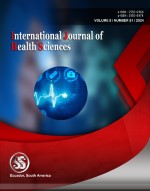Endodontic obturation techniques
A review
Keywords:
Gutta-percha, thermoplastic, injection, technique, heatAbstract
Obturation in endodontics is one step which is of utmost importance. For success of endodontic process a tight seal should be achieved which is necessary for successful treatment. Over the past few years, advanced obturation materials and techniques have been introduced for endodontic therapy. Among the different obturating materials available, gutta percha is one of the most widely used. Various techniques available for condensing gutta percha are available. Newer devices are being introduced some of which are heat, injection, vibration, compaction & carrier based systems. This article aims to present the different techniques available for root canal filling materials.
Downloads
References
Cohen S, Hargreaves KM. Pathways of the pulp.10th ed. St. Louis, Missouri: Mosby Elsevier; 2011. P.349-383.
Whitworth J. Methods of filling root canals: principles and practices. Endodontic Topics 2005;12:2-24.
Fisher MA, Berzins DW, Bahcall JK. An in vitro comparison of bond strength of various obturation materials to root canal dentin using a push-out test design. J Endod. 2007;33(7):856-8.
Gilhooly RM, Hayes SJ, Bryant ST, Dummer PM. Comparison of cold lateral condensation and a warm multiphase gutta-percha technique for obturating curved root canals. Int Endod J. 2000;33(5):415-20.
Al-Dewani N, Hayes SJ, Dummer PM. Comparison of laterally condensed and low-temperature thermoplasticized gutta-percha root fillings. J Endod. 2000 Dec;26(12):733-8.
Mc Cullagh JJ et al. A comparison of thermocouple and infrared thermographic analysis of temperature rise on the root surface during the continuous wave of condensation technique. Int Endod J. 2000 Jul;33(4):326-32.
De Moor RJ, Hommez GM. The long-term sealing ability of an epoxy resin root canal sealer used with five gutta percha obturation techniques. Int Endod J. 2002;35(3):275-82.
Wu MK, van der Sluis LW, Ardila CN, Wesselink PR. Fluid movement along the coronal two-thirds of root fillings placed by three different gutta-percha techniques. Int Endod J. 2003 Aug;36(8):533-40.
Shipper G, Ørstavik D, Teixeira FB, Trope M. An evaluation of microbial leakage in roots filled with a thermoplastic synthetic polymer-based root canal filling material (Resilon).NJ Endod. 2004;30(5):342-7.
Jarrett IS, Marx D, Covey D, Karmazin M, Lavin M, Gound T. Percentage of canals filled in apical cross sections - an in vitro study of seven obturation techniques. Int Endod J. 2004 Jun;37(6):392-8.
Chu CH, Lo EC, Cheung GS. Outcome of root canal treatment using Thermafil and cold lateral condensation filling techniques. Int Endod J. 2005;38(3):179-85.
Hargreaves Kenneth M and Cohen S. Cohen’s Pathways of the Pulp. 10th ed. Mosby Inc; 2011.P.349-388
Weller RN, Kimbrough WF, Anderson RW. A comparison of thermoplastic obturation techniques: adaptation to the canal walls. J Endod 1997; 23:703–6.
Clinton K, Van Himel T. Comparison of a warm Gutta-percha obturation technique and lateral condensation. J Endod. 2001;27(11):692–695.
Lea CS, Apicella MJ, Mines P, Yancich PP, Parker MH. Comparison of the obturation density of cold lateral compaction versus warm vertical compaction using the continuous wave of condensation technique. J Endod. 2005;31(1):37–39.
Schilder H: Filling root canals in three dimensions. Dent Clin North Am Nov:723, 1967.
Blum JY, Esber S, Micallef JP: Analysis of forces developed during obturations: comparison of three gutta-percha techniques.J Endod 23:340, 1997.
Togger M. Evaluation of the apical seal produced by a hybrid root canal filling method, combining lateral condensation and thermatic compaction. JOE, 1984;10:299.
Kaplan T, Sönmez Kaplan S, Sazak Öveçoğlu H. Güncel kök kanal dolum teknikleri. Sazak Öveçoğlu H, editör. Kök Kanallarının Doldurulması. 1. Baskı. Ankara: Türkiye Klinikleri; 2019. p.18-24.
Weller RN, Kimbrough WF, Anderson RW: A comparison of thermoplastic obturation techniques: adaptation to the canal walls. J Endod 23:703, 1997.
Brackett MG, Martin R, Sword J, et al: Comparison of seal after obturation techniques using a polydimethylsiloxane based root canal sealer. J Endod 32:1188, 2006.
Holland R, de Souza V, Murata SS, et al: Healing process of dog dental pulp after pulpotomy and pulp covering with mineral trioxide aggregate or Portland cement. Braz Dent J 12:109, 2001.
Monticelli F, Sadek FT, Schuster GS, et al: Efficacy of two contemporary single-cone filling techniques in preventing bacterial leakage. J Endod 33:310, 2007.
Ozok AR, van der Sluis LW, Wu MK, Wesselink PR: Sealing ability of a new polydimethylsiloxane-based root canal filling material. J Endod 34:204, 2008.
Santos MD, Walker WA, III, Carnes DL, Jr: Evaluation of apical seal in straight canals after obturation using the Lightspeed sectional method. J Endod 25:609, 1999.
Harris GZ, Dickey DJ, Lemon RR, Luebke RG: Apical seal: McSpadden vs lateral condensation. J Endod 8:273, 1982.
Kersten HW, Fransman R, Thoden van Velzen SK: Thermomechanical compaction of gutta-percha. I. A comparison of several compaction procedures. Int Endod J 19:125, 1986.
Saunders EM: In vivo findings associated with heat generation during thermomechanical compaction of gutta-percha.Temperature levels at the external surface of the root. Int Endod J 23:263, 1990.
Published
How to Cite
Issue
Section
Copyright (c) 2024 International journal of health sciences

This work is licensed under a Creative Commons Attribution-NonCommercial-NoDerivatives 4.0 International License.
Articles published in the International Journal of Health Sciences (IJHS) are available under Creative Commons Attribution Non-Commercial No Derivatives Licence (CC BY-NC-ND 4.0). Authors retain copyright in their work and grant IJHS right of first publication under CC BY-NC-ND 4.0. Users have the right to read, download, copy, distribute, print, search, or link to the full texts of articles in this journal, and to use them for any other lawful purpose.
Articles published in IJHS can be copied, communicated and shared in their published form for non-commercial purposes provided full attribution is given to the author and the journal. Authors are able to enter into separate, additional contractual arrangements for the non-exclusive distribution of the journal's published version of the work (e.g., post it to an institutional repository or publish it in a book), with an acknowledgment of its initial publication in this journal.
This copyright notice applies to articles published in IJHS volumes 4 onwards. Please read about the copyright notices for previous volumes under Journal History.
















